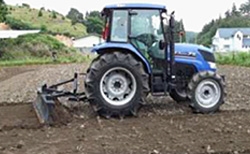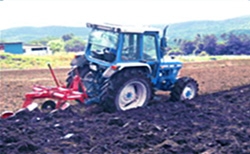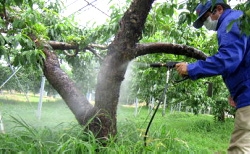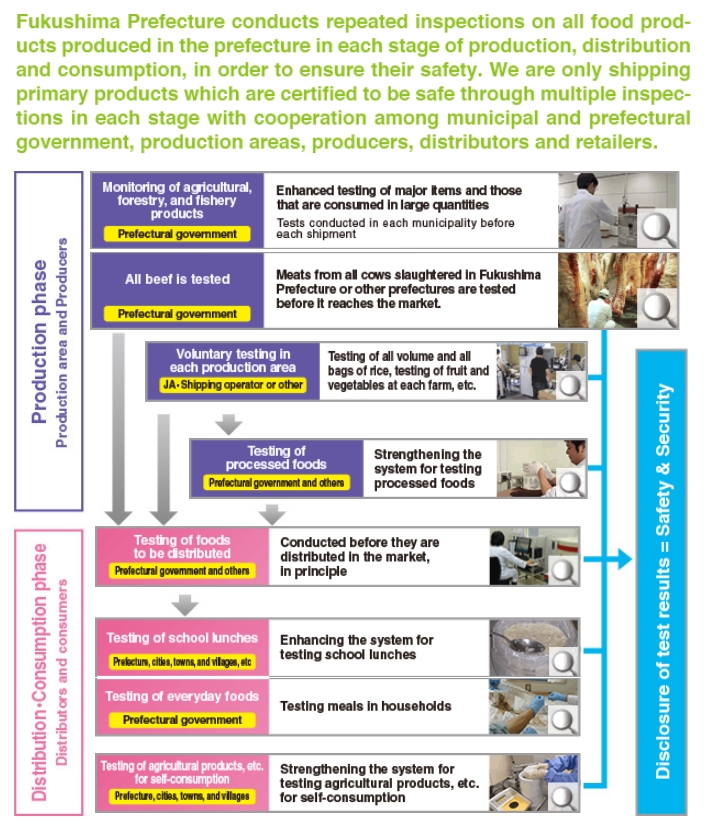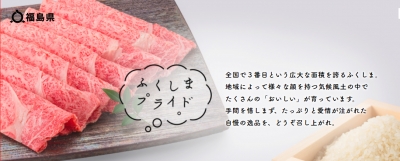- Fukushima Prefecture's agriculture, forestry and fisheries were significantly affected by the disaster.
- The impact can be broadly divided into two categories, ""damage caused by the earthquake and tsunami" and "impact resulting from the nuclear disaster".

(1)Damage caused by the earthquake and tsunami
- As a result of the earthquake and tsunami, some farmers suffered losses with agricultural land, facilities and machinery being destroyed or swept away, rendering them unable to continue agricultural activities.
- For instance, during the earthquake, rice fields and vegetable gardens had cracks, agricultural roads and dams were destroyed, and large-scale horticultural greenhouses collapsed, leading to significant damage in agricultural areas.
- Likewise, the tsunami caused destruction along coastal agricultural land, damaged water channels, drainage systems and other infrastructures. Greenhouses, tractors and other equipments were washed away, and debris and sludge accumulated on agricultural lands. Additionally, the intrusion of seawater resulted in elevated soil salinity, further delaying the resumption of agricultural operations.
- In the forestry sector, damage was observed in the form of landslides on mountain slopes and the destruction of forest roads caused by the earthquake.
- The fishing industry also faced consequences from the tsunami, including damage to fishing ports, fish markets, fish processing facilities and fishing vessels. Debris accumulation in fishing grounds was another significant impact.
- The situation of the damage is as follows:
[Situation of damage in the agriculture, forestry and fisheries industries as of April 23, 2011]
| Category |
Number of areas, etc. |
Damage amount (in thousands of yen) |
Remarks |
| Agricultural damage |
|
300Cases |
2,110,000 |
|
| Crops |
101Cases |
805,000 |
|
| Agricultural facilities |
199Cases |
1,305,000 |
|
| Fisheries damage |
|
|
26,377,000 |
|
| Fisheries-related facilities |
1,341Areas |
19,068,000 |
|
| Aquaculture products, etc. |
2,232Tons |
670,000 |
|
| Fishing vessels |
873Vessels |
6,639,000 |
|
| Agricultural land damage |
|
4358Areas |
230,258,000 |
|
| Farmland |
1,283Areas |
93,507,000 |
A=5,991ha |
| Waterways |
1,133Areas |
27,491,000 |
|
| Roads |
894Areas |
2,966,000 |
|
| Reservoirs |
745Areas |
23,611,000 |
Including dams |
| Headworks |
59Areas |
3,125,000 |
|
| Pumping stations |
113Areas |
28,624,000 |
|
| Bridges |
4Areas |
84,000 |
|
| Lake shore embankments |
2Areas |
3,000,000 |
|
| Agricultural community drainage facilities, etc. |
105Areas |
22,431,000 |
|
| Coastal conservation facilities |
20Areas |
25,419,000 |
|
| Forestry damage |
|
735Areas |
2,362,000 |
|
| Forests |
11Areas |
265,000 |
|
| Forestry products, etc. |
39Areas |
146,000 |
|
| Forestry facilities |
52Areas |
1,162,000 |
|
| Forest roads |
633Areas |
789,000 |
|
| Erosion control damage |
|
113Areas |
14,253,000 |
|
| Woodland |
103Areas |
10,681,000 |
|
| Erosion control facilities |
10Areas |
3,572,000 |
|
| Total |
|
|
275,360,000 |
|
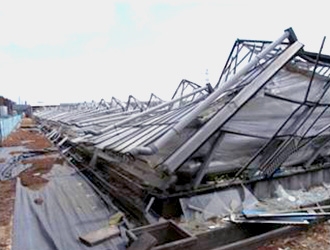
【Damage to large-scale horticultural greenhouses】 |
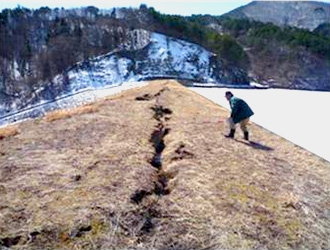
【Damage to reservoir embankments】 |
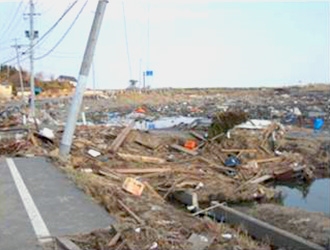
【Damage to farmland caused by the tsunami】 |
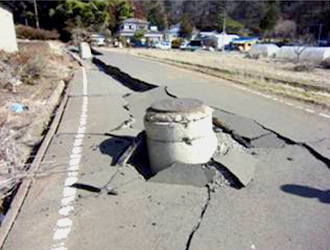
【Damage to agricultural community drainage facilities】 |
(2)Damage caused by nuclear disasters
1.Establishment of evacuation zones
- As a result of establishing evacuation zones due to the nuclear power station accident, access to the land within the zones was restricted and farmers had to evacuate.
- For instance, the total number of farming households was approximately 14,600 in the 12 municipalities*1 where evacuation orders were issued as a result of the nuclear accident. This represents approximately 15.0% (*2) of the pre-disaster total of 96,600 farming households in the prefecture.
 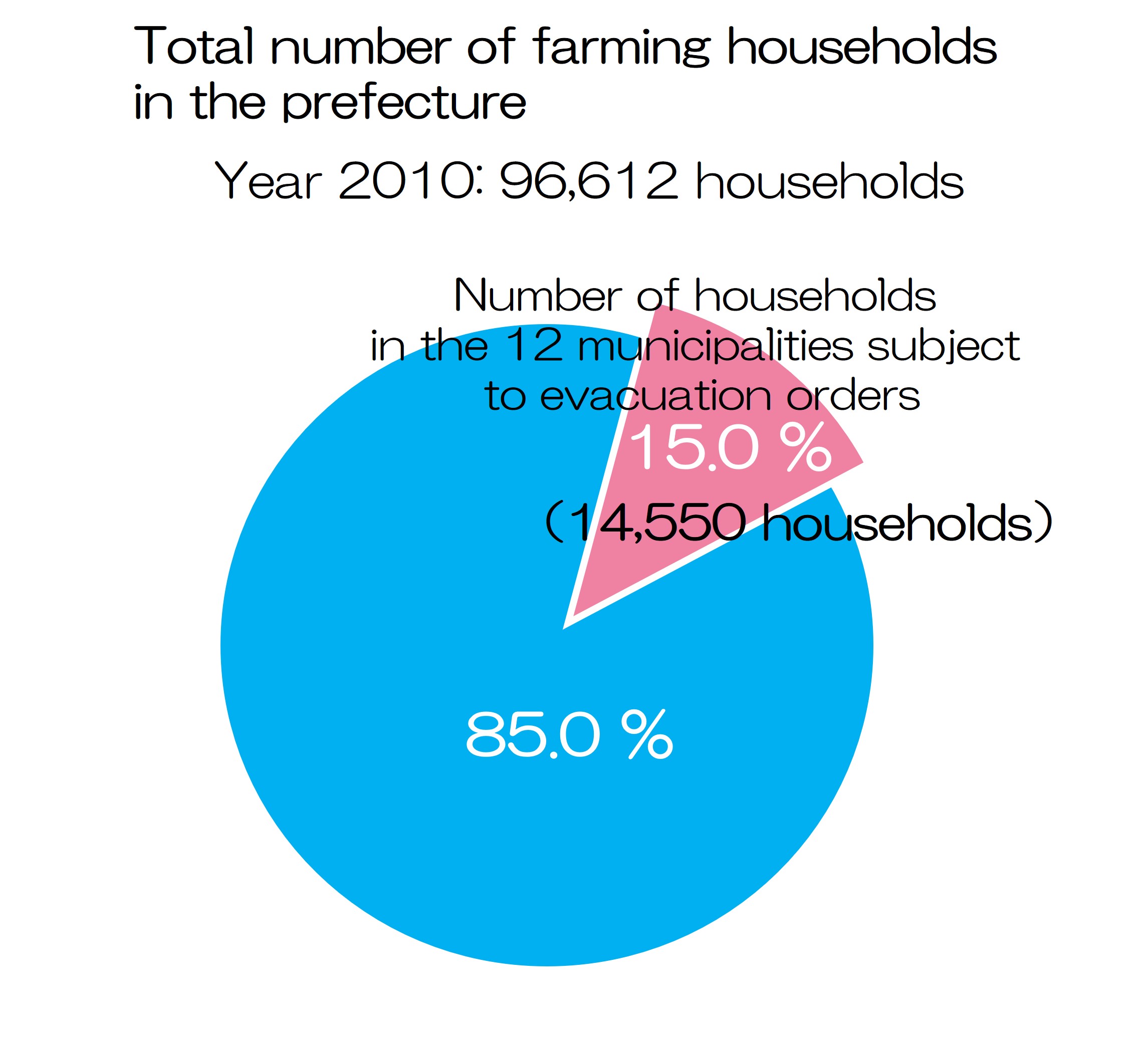
-
*1 municipalities where evacuation orders were issued (designated as Hazard Zone, Planned Evacuation Zone and Emergency Evacuation Preparation Zone): Tamura City, Minamisoma City, Kawamata Town, Hirono Town, Naraha Town, Tomioka Town, Kawauchi Village, Okuma Town, Futaba Town, Namie Town, Katsurao Village, Iitate Village.
*2 Designation of evacuation zones was limited to certain areas in some municipalities, but the numbers were calculated for each and entire municipality respectively here.
2.Restrictions on planting and shipping
- Due to the impact of radioactive materials spread by the nuclear accident, there have been restrictions on rice cultivation in certain regions even in areas where normal living is possible. Additionally, for vegetables, fruits, mushrooms and other produces, inspections were conducted to check for radioactive materials. If the detected levels exceeded the safety standards, shipping restrictions were imposed.
- As a result of continuous inspections for radioactive materials and the efforts of producers to implement measures to prevent crop absorption, the number of restricted areas has significantly decreased. However, in some areas (such as evacuation-designated zones), restrictions have not been lifted yet.
3.Impact of harmful rumours
- Agricultural, forestry and fisheries products produced and distributed commercially in Fukushima Prefecture and have been confirmed perfectly safe, as measures to prevent the absorption of radioactive materials have been thoroughly implemented and strict inspections are conducted to ensure safety (*see later description). However, some consumers still feel uncertain in consuming these products and believe that it is best to avoid Fukushima Prefecture's products if there is a choice.
- Therefore, there are cases where Fukushima Prefecture's products are removed from stores or sold at lower prices.
If sold at lower price, sales (production value) are reduced even with the same quantity of products sold.
- Consequently, production value (sales) of Fukushima Prefecture's agricultural, forestry and fisheries industries experienced a severe decline after the disaster. As shown in the graph below, there was a significant drop in 2011.
- However, the producers in Fukushima Prefecture continue to work with the concerned parties to rebuild and revitalize the industries.
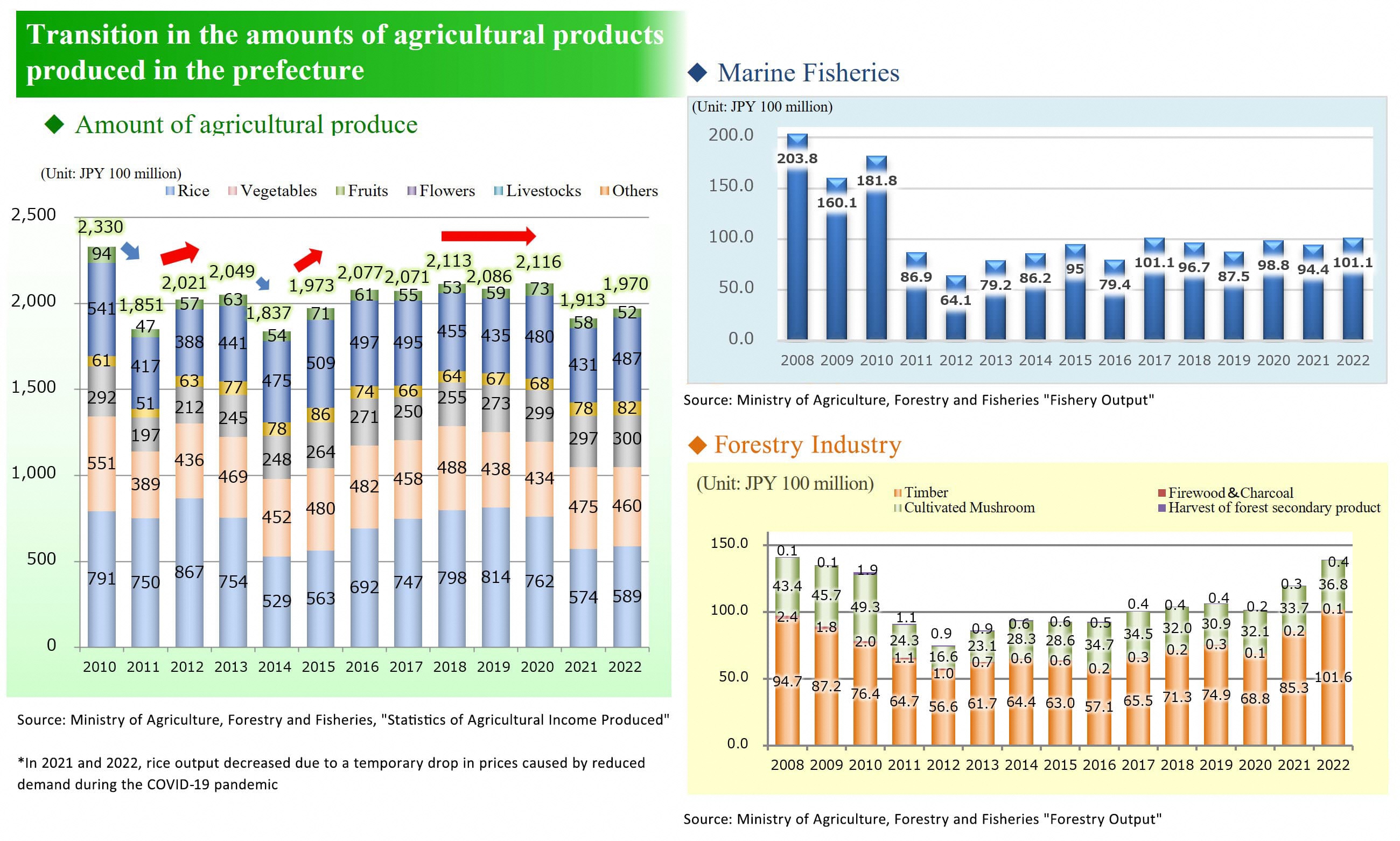
|











 estoration of production infrastructure
estoration of production infrastructure